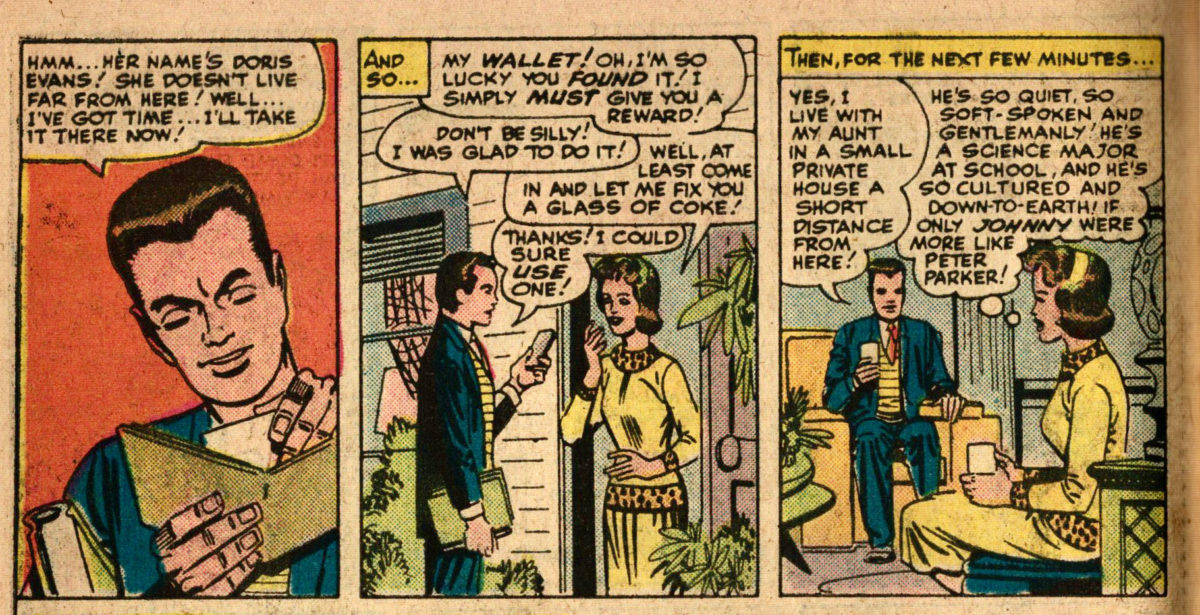Featuring: Fantastic Four
Release: September 10, 1963
Cover: December 1963
12 cents
Written by: Stan Lee
Drawn by: Jack Kirby
Inked by: George Bell
22 pages

The cover tells me not to dare reveal Hate-Monger’s identity. I fear that I am going to have to do just that. Spoilers ahead.

This is George Roussos’ first time on Fantastic Four and the effects are noticeable. He makes less effort than the other inkers to smooth out Kirby, and if anything only emphasizes the sharp angles of the faces, creating a more exaggerated style. The first page is meant to show the FF looking angry and hate-filled, so perhaps is not the ideal introduction to his take on the characters.
The first page lets me know this will be the most unusual, thought-provoking tale I will read this season. Often, Stan uses hyperbole in these opening pages. But I think the ending (yes, the one I plan to spoil; you are warned) more than lives up to Stan’s promises.
Continue reading “Fantastic Four #21”



























